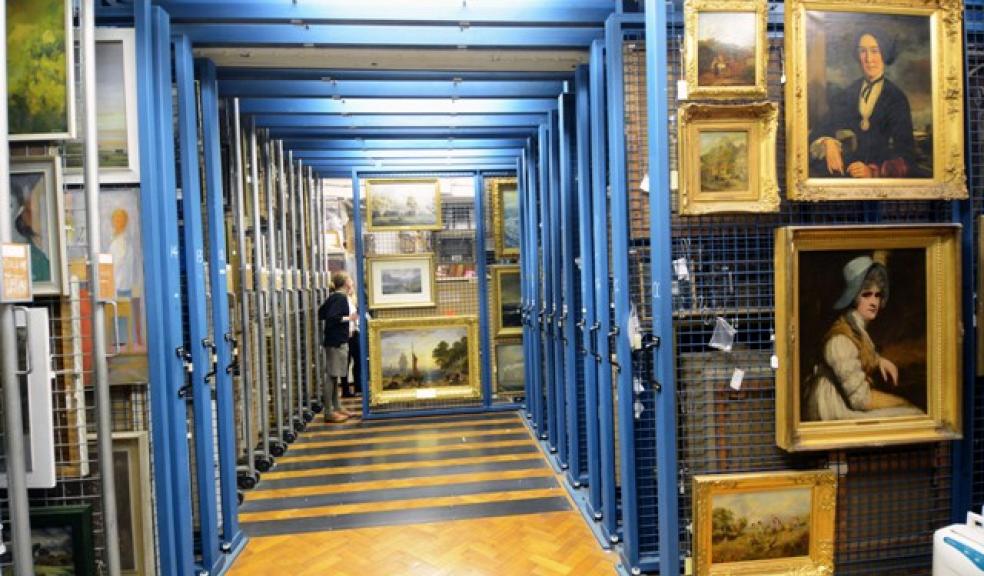
How do you empty a museum full of treasures?
The answer: very very carefully!
When work begins on Plymouth’s new History Centre, the double fronted Edwardian buildings on North Hill will have to be empty.
Even though the museum will remain open with exhibitions and events until this time next year, work will be going on in the stores and offices to carefully pack and move the city’s treasures off site.
This is a long and very delicate process with over one million artefacts to move, including 10,000 pieces of decorative art, 16,000 pieces of fine art and 20,000 natural history specimens, 36,000 of which are beetles and 70,000 are moths. It could take a while.
Some of the items are priceless and irreplaceable, they include relics, antiques, artefacts and paintings; from a tiny Bronze Age bead, which is no bigger than a cashew nut and holds clues to the local and international story of tin, to two inner Egyptian coffins.
Plymouth City Council Deputy Leader Councillor Pete Smith said: “This is a huge task; you simply can’t put everything in the back of a van and hope for the best.”
"The museum curators have spent months looking at the collections and carefully working out what their storage needs are, what temperatures they should be stored at and how best to move them.”
"We now have a detailed plan and a secure site to hold the collections while the Centre is being built, these are our city treasures, the meat of what the History Centre is all about and we are going to handle them very carefully.”
A lease has now been signed for a temporary storage site which contains suitable racking and the controls to keep the collections in the right environment until the Centre opens.
The curators have also taken advice from experts and other venues who have undertaken large scale moves. All the advice they have received points to a slow and methodical approach as the best way to tackle the move.
Working very closely with the National Conservation Service, the team now have a detailed Conservation Plan, a document which outlines how these collections should be looked after.
Some items such as large scale sculptures will need to be moved by specialist movers, but the majority of the work will be done by the museum staff who have been given time to prepare the temporary storage space and order the collections so that they can still be accessed by staff while the museum is closed.
Paul Brookes, Programme Director for the History Centre said: “Although the museum will be closing at the end of next summer, we will still be delivering arts and heritage services throughout the city. You may see a museum pop up in your community or see some of the collections hosted by other tourist attractions. The museum may not be here on North Hill for a while, instead we will be everywhere.”
The move also presents the museum with the opportunity to identify and carry out any conservation work before items get put back on display in the History Centre.
Some collections will be photographed and digitised so they will be more accessible and the curators are undertaking new research into the collections to enable them to be displayed in new ways.
The decant of the museum collections into temporary storage will be complete by January 2017 and the new centre is to open as the focal point for the Mayflower 400 celebrations in 2020.
Follow the journey: @loveourpast, www.plymouth.gov.uk/loveourpast, www.facebook.com/loveourpast















